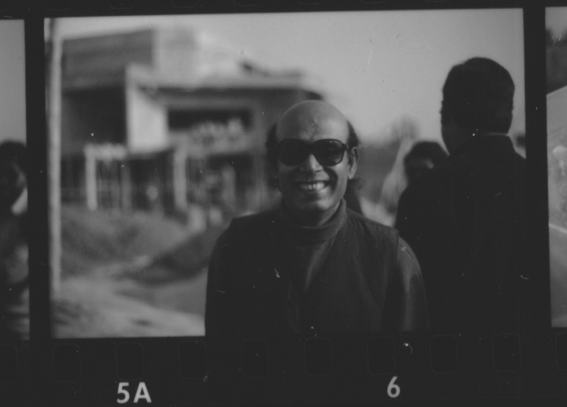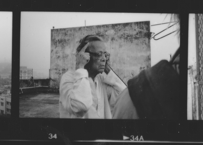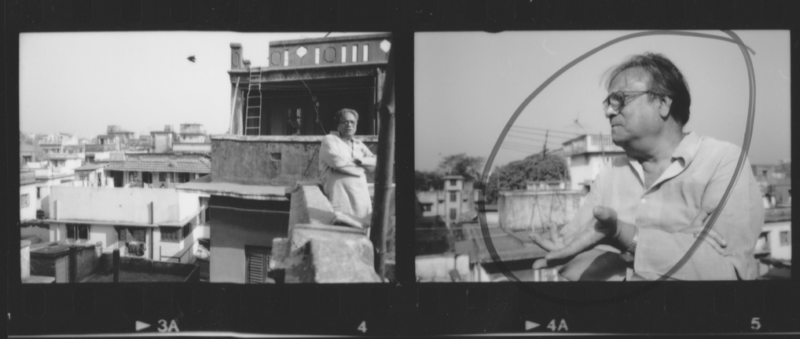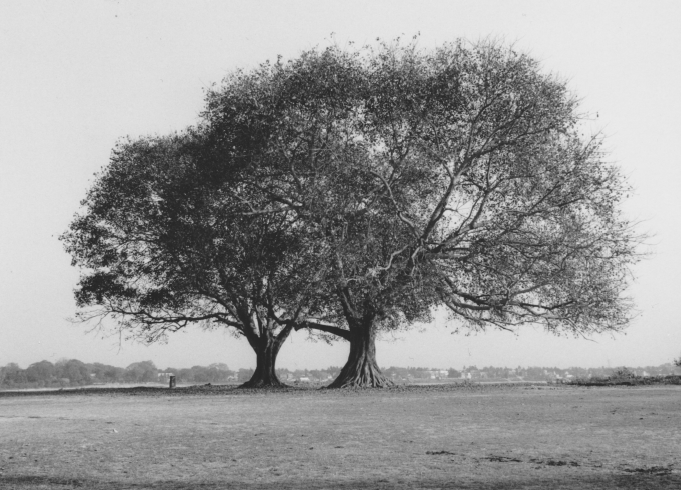 the story of this project
the story of this project
In 1995, the wish to discover the city and the world of Satyajit Ray brought us a first time to Calcutta; we were working on location for a documentary film about his life and his work. It was an initiatory journey; we had the privilege of meeting the actors, technicians, friends and collaborators that were the closest to him.
Sandip Ray, the son of Satyajit welcomed us into his home, approved our project and showed us his father’s workroom. Time seemed to have stopped…. Ray had died in 1992 but his aura could be felt in every nook and cranny…. an incredible privilege for us: for three days we had access to all his manuscripts, original scripts (his famous red books), scores, sketches and family photos…
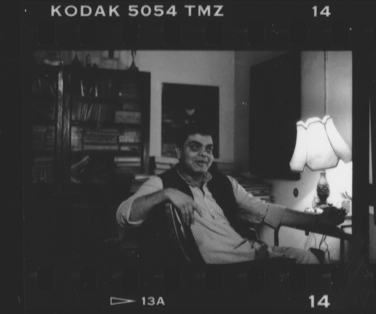
 In 1997, while we were in Calcutta for further research and to commence shooting, we met the photographer – Nemai Ghosh. We had of course heard of him, Cartier-Bresson had nicknamed him the « photo-biographer » of Ray. True enough, Nemai Ghosh had followed him like his shadow, documenting his exceptional artistic vitality.
In 1997, while we were in Calcutta for further research and to commence shooting, we met the photographer – Nemai Ghosh. We had of course heard of him, Cartier-Bresson had nicknamed him the « photo-biographer » of Ray. True enough, Nemai Ghosh had followed him like his shadow, documenting his exceptional artistic vitality.
In 1968, arriving almost by shear chance at the shooting of one of Ray’s films, with a camera he had found on the backseat of a taxi, it was as if in a trance that he feels his fingers slide slowly onto the camera’s pushbutton. Returning a few days later at the shooting to show some of his photos, Satyajit Ray congratulates him realizing that they share the same point of view! Nemai tingled with excitement… Ray invites him to take photos on location of the shooting … Nemai’s life forever changed.
Nemai Ghosh invites us to his home and we discover a breathtaking treasure: Nemai Ghosh photographed Satyajit Ray 90,000 times. His photos are carefully kept at home. At the time, there were works going on in his home; he tried desperately to protect them from the humidity by installing air conditioning. Nemai Ghosh tells us of his life in the shadows of his subject. His account sounds like a confession. We ask him whether he would agree to collaborate with us on this project. ”Yes, this is the last thing I’ll do for Manikda” he says. From this moment onwards, Nemai accompanies us on our search of locations and on the shootings. Thanks to him, we were introduced to the high society: we interviewed the great filmmaker Mrinal Sen, the stupendous actor Soumitra Chatterjee, Ray’s alter ego, the sublime Madhabi Mukherjee and Sarmila Tagore, Depankar Dey, Mamata Shankar, the chief cameraman Soumendu Roy, etc…
Nemai Ghosh tells us of his life in the shadows of his subject. His account sounds like a confession. We ask him whether he would agree to collaborate with us on this project. ”Yes, this is the last thing I’ll do for Manikda” he says. From this moment onwards, Nemai accompanies us on our search of locations and on the shootings. Thanks to him, we were introduced to the high society: we interviewed the great filmmaker Mrinal Sen, the stupendous actor Soumitra Chatterjee, Ray’s alter ego, the sublime Madhabi Mukherjee and Sarmila Tagore, Depankar Dey, Mamata Shankar, the chief cameraman Soumendu Roy, etc…
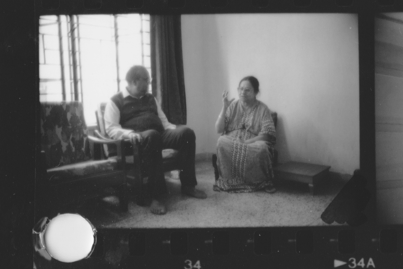
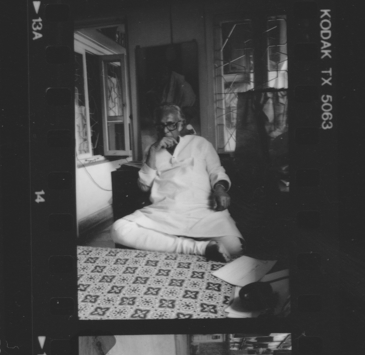

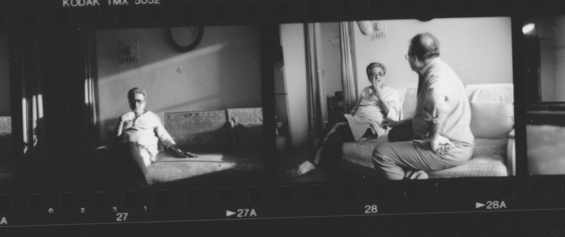
Nemai devotes his entire time and energy in helping us accomplish our project. This film seems to represent for him, an ultimate act of faith of transmitting to future generations the fruit of an entire life devoted to that of another.
The film is conceived from this encounter: as we were preparing to make a somewhat classical documentary about Satyajit Ray with interviews and extracts from his films, our project took a turn. Nemai Ghosh followed Satyajit Ray for 25 years: we began to imagine a film which would take us deep into the intimacy of one of the greatest filmmakers of the 20th century through the eyes of one man: the obsessional fixation of a photographer for his one and unique subject, the silent friendship between a brilliant artist and his privileged observer. Nemai became the main character of our film, and it’s through his story that the stature of Ray is revealed.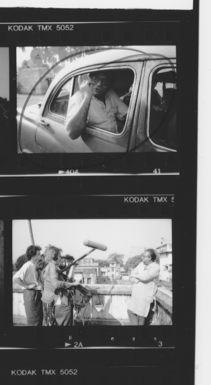
But we were in a dilemma… this new direction of the film had immediate and tragically concrete consequences: this meant that in the final editing, we were not going to reap the fruits of those first shootings, dozens of hours of exclusive interviews and those fascinating meetings with the family, friends, actors, technicians and some of the closest collaborators of Ray.
Today, the ‘released’ version of the film exists, and it might be fragile, but it has the merit of having brought Nemai Ghosh out of the shadows and into the light, revealing his work to a much larger public. This said, we never considered it as the final version because of all those emotions accumulated in our memories from the first shootings which are still so tangible.
We were left with a feeling of having come short, of unfinished work … The urge to give life to this sleeping treasure, the wish to share all these interviews and intense accounts came forth. We got in contact with the producer to get back the original tapes, but for obscure reasons, they had disappeared.
Luckily, tucked away in our attic we found a suitcase containing pale copies on VHS. All the content is there, but the cassettes hadn’t aged well, the images are saturated, some unrecoverable, the sound on a VHS is what it is, well ….
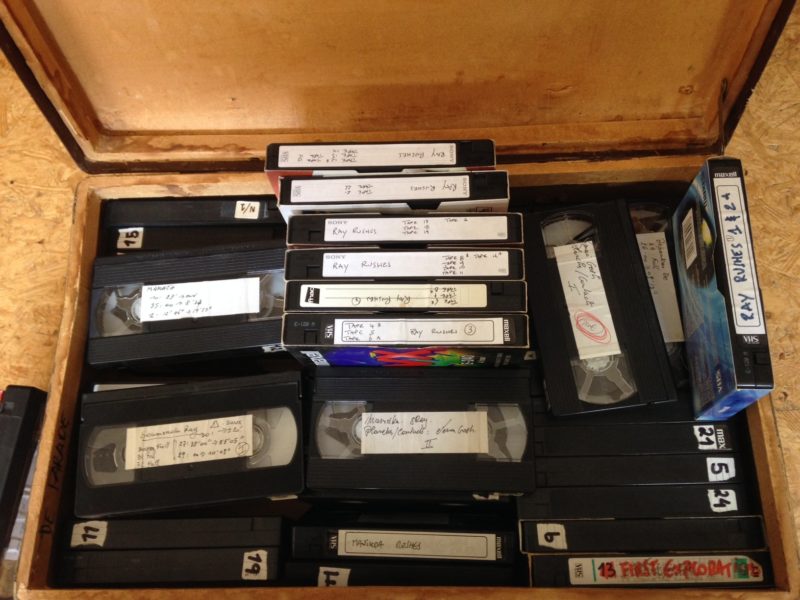
In spite of the immense bitterness we felt due to the negligence in the safe keeping of the tapes and the subsequent waste of a long period of work we decided to alter the course of destiny and immersed ourselves in these images shot some twenty years ago. The quality of the images and the sound are atrocious, but the intensity of the interviews and the exchanges between people is still very much there, the content is as strong as ever and hasn’t aged one bit.
Today we are at the beginning of the long task of de-rushing and digitalizing little by little everything we find interesting to share with those either close or remotely attracted to the world of Satyajit Ray. The content is rendered rough, there is no editing, the standpoint is to broadcast the interviews in its entirety, with claps and sound boom visible. It’s the beginning of a long exploration into 120 hours of rushes … MANIKDA.SPACE is a treelike work in progress and you will discover new bits every time you visit the site.
Bo van der Werf and Filipa Cardoso
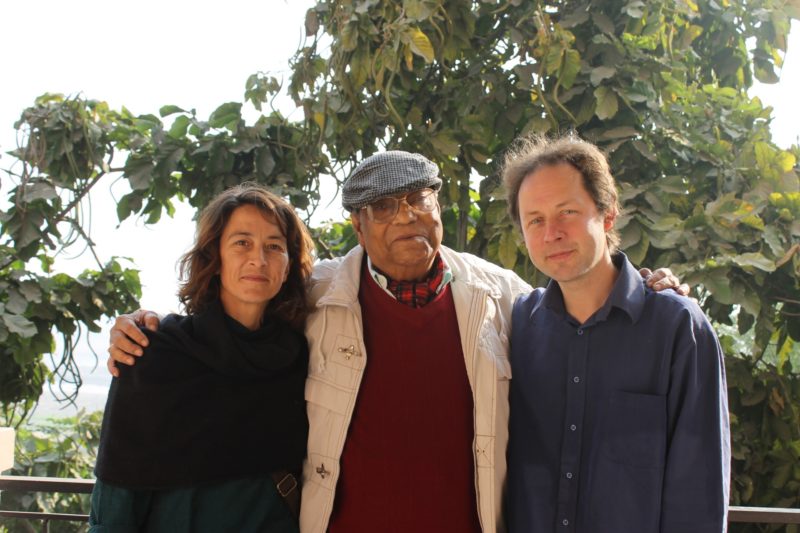 ( Delhi, nov 2015 )
( Delhi, nov 2015 )
The project ‘MANIKDA.SPACE’ is dedicated to the memory of Nemai Ghosh, thanking him for his confidence, his kindness, his generosity and his immense humanity. Durgaa Durgaa!
Nemai Ghosh ( 1934-2020 )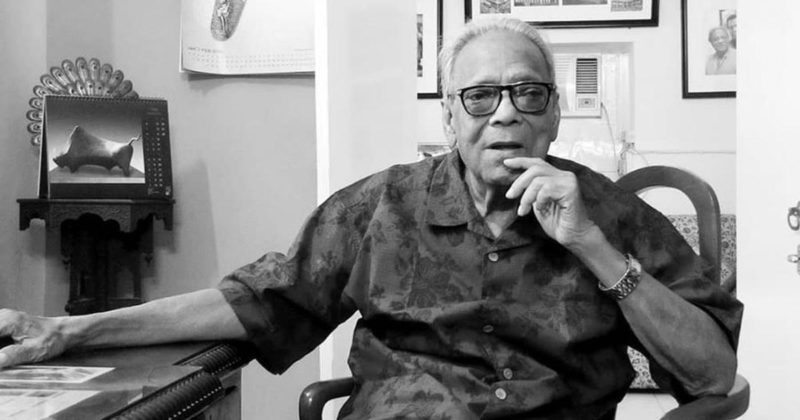 photo : Syamantak Chattopadhyay / facebook
photo : Syamantak Chattopadhyay / facebook
thanks to:
So as explained, the vast majority of the images you will discover on this site doesn’t appear in the final version of the film: they were filmed between 1997 and 1999. Those two first shootings were chaotic, and the technical crew had shown us their infinite patience towards our lack of experience. This project owes a lot to them. Thank you Alexandra Afonso, Aline Blondiau, and Eline Kirschfink. Special thanks to Marie Spencer, who shared this project from the very first beginnings and encouraged us to hold strong against all odds.

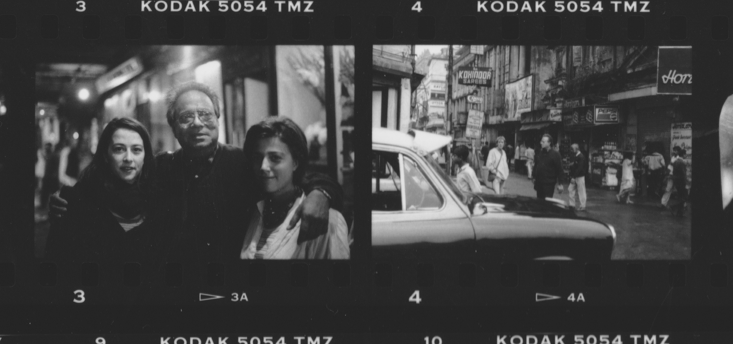
Nearly all the images that were used in the film were taken in 2005 with a smaller technical crew. Sebastien Koeppel was our cameraman. He literally blended into the shooting locations and the empathy with which he filmed people was impressive, his sensitive eye and poetry permeates the images. Thanks also to Masood Akhtar and Sreyashi Sen for their precious assistance during the 2005 shooting.
Last but not least, this project pays tribute to all those magnificent stars in the Ray galaxy who so kindly welcomed us and who implicated themselves so generously in the initial project. A warm tribute to Manikda, ‘this immense tree in the middle of the Indian forests’. Thanks to Madhabi Mukherjee, Soumitra Chatterjee, Mrinal Sen, Chidananda Dasgupta, Sarmila Tagore, Soumendu Roy, Sandip Ray, Mamata Shankar, Depankar Dey, RP Gupta, Buddhadeb Dasgupta, RP Gupta,Samik Bandhyopadhyay, Soumendu Roy, Sandip Ray, …
( thanks to Nadine Ganase for the translation )